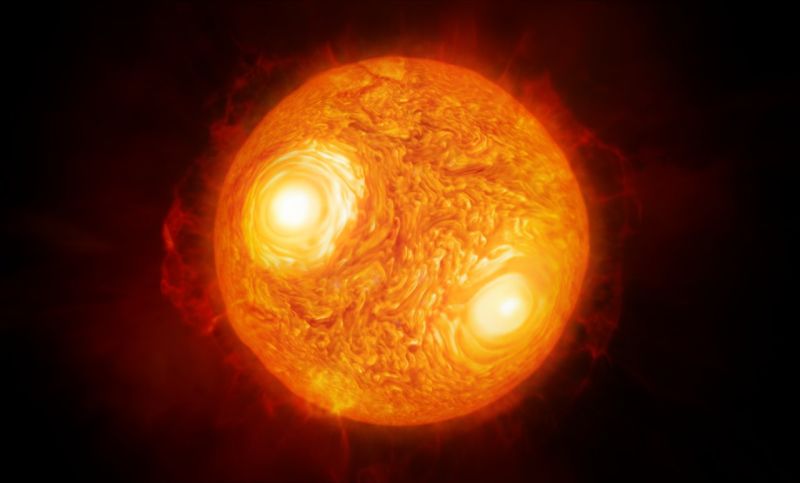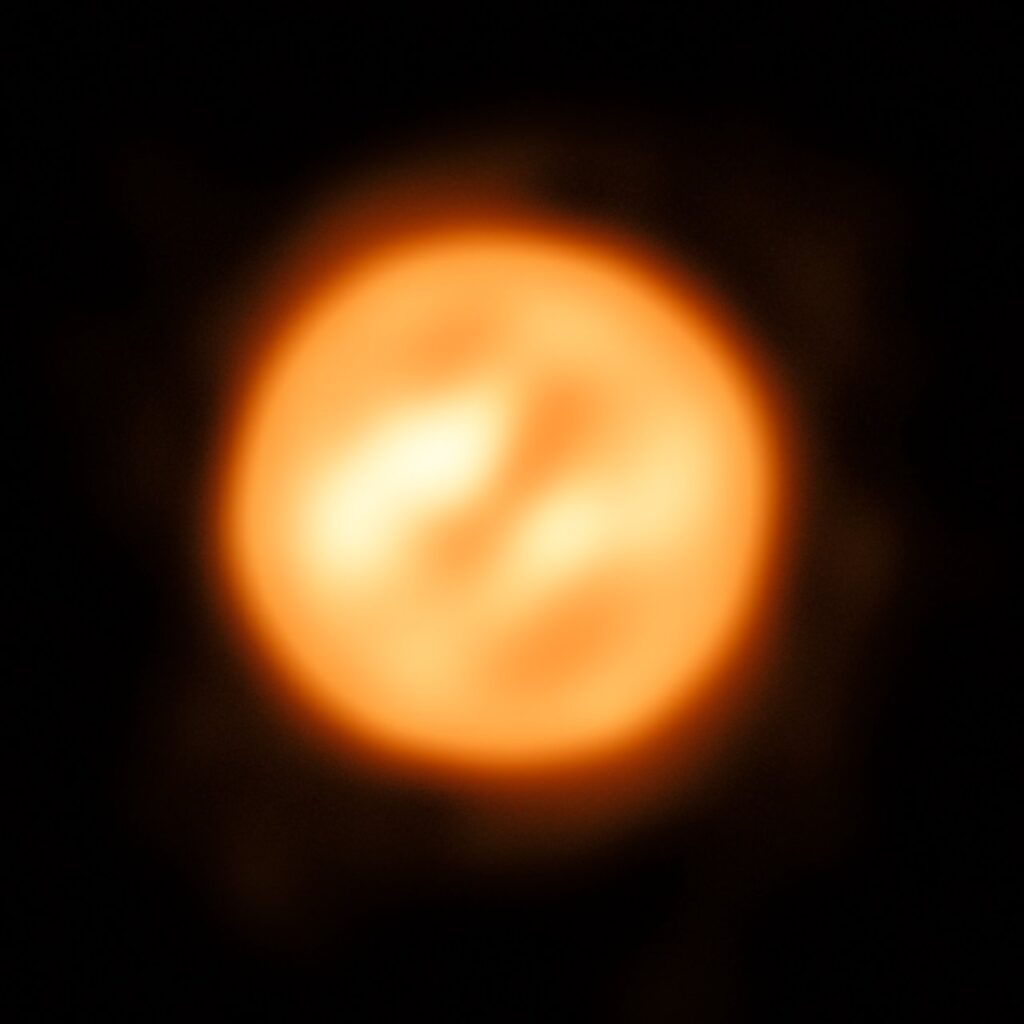Red supergiant Antares is really huge! It has a mass about 15 times as that of the sun.
The scientific community is forever fascinated by the incredible extra-celestial occurrences taking place millions of light years away. Every new discovery means a window of opportunity to piece together the puzzle of the way our universe functions. We may never come down to fully understanding the mysterious ways of this vast universe, but one has got to credit the scientists for their unrelenting efforts.
One such recent mystery that has had experts confused stems from what is being hailed as the most detailed image of a star ever taken. A team at the Paranal Observatory in Chile used the Very Large Telescope Interferometer (VLTI) to capture detailed images of the surface of bright star Antares. The resultant images spotted a phenomenon of quickly-moving gas clumps in the star’s atmosphere – an occurrence that has left the scientists confused. A paper detailing the discovery (and ensuing speculations) published in the journal Nature recently states, “Convection alone cannot explain the observed turbulent motions and atmospheric extension, suggesting the operation of a yet-to-be identified process in the extended atmosphere.”

Antares is the brightest known star in the Scorpius constellation. This red supergiant, which is only 555 light years away from us, has a radius 883 times larger than the Sun. To put that in perspective, if Antares were to replace the Sun in our solar system, it would engulf the entire orbit of Mars. The recently emerged image of Antares is a reconstruction of data accumulated through multiple synchronized telescopes done with help of a special analysis algorithm. Researchers used a process called interferometry to observe Antares’ infrared light on five different days in 2014 with help of four telescopes. The data, thus, collected were combined, as if it were taken from one enormous telescope.
Besides the detailed image, this process also led to the discovery of gases moving about in the star’s atmosphere at a speed of 20 kilometers per second. The team was quick to realize that convection – the process of matter being circulated by heating and cooling effects, as in the case of a boiling pot – alone could not trigger such speedy movements. Drawing parallels with Betelgeuse, a star which held the distinction of most-detailed-image-yet until images from Antares emerged, researchers noted that even though the former had similar motions of gases in its atmosphere, these moved at a quarter of the speed recorder on Antares.
The author of the recently published paper noted, “The next challenge remains to identify the driving mechanism responsible for the observed turbulent motions.”
Even as scientists look for ways to unravel this mystery, aspersions are being cast on the accuracy of the data related to Antares received through infrared wavelengths. Some experts suggest that use of optical wavelengths alone could limit the accuracy of these observations as it is possible that some crucial details were not captured in the said images. Use of titanium oxide (TiO) opacity is also being recommended to seek accurate analysis of the stellar atmosphere. For now, there are more questions and conjectures than clear answers, and it only goes on to prove that what we know about the universe is just an iota of knowledge.




